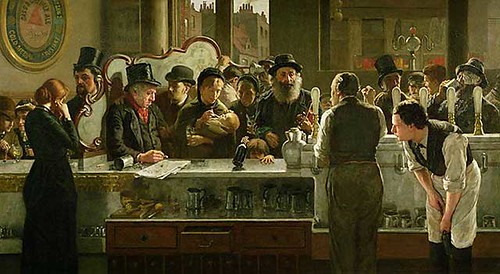
This week’s work of art is by the English artist, John Henry Henshall, who painted The Public Bar, occasionally known as In The Pub, in 1883.

It’s a little unusual for the time, in that it shows the view from behind the bar, looking out at a cross-section of patrons. Also, notice the Bass sign hanging on the wall at the left.
You can read Henshall’s biography at Wikipedia, though it’s only a stub. You can also a few more of Henshall’s paintings at
Art Renewal Center and Painting Here.


